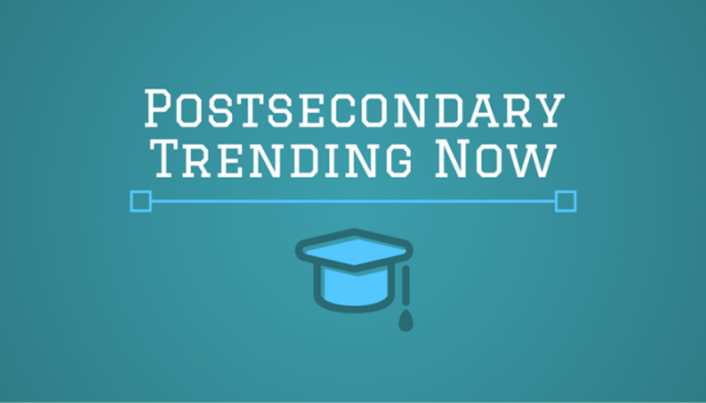
The ELI Annual Meeting is in full swing, here in Houston, Texas. Our community of 500+ attendees has once again selected the Key Issues in Teaching and Learning and we're learning, networking, and exchanging information on those issues together as we always do. We're also under tornado warning at the moment. I think the tornado is the perfect symbol as I contemplate what else is trending in higher education right now:
- The U.S. Department of Education is in the hands of a person whose nomination and confirmation spurred unprecedented levels of protest.
- Foreign born researchers and professors are concerned about traveling to attend or present at conferences here because they could be denied entry to the country.
- Immigrant students on campuses across the nation are wondering if they'll be able to stay here and finish what they are working so hard to achieve.
When people look back on this time in 100 years, I think they will call it The Deconstruction, the way we refer to the years after the Civil War as The Reconstruction. All the constructs and mental models we put in place to make sense of our world and to navigate through it are coming apart, including the way we have approached education.
Possible Futures with Artificial Intelligence
ELI attendees got a glimpse of how our model of education might be different from Satya Nitta, Program Director, Cognitive Computing for Education at IBM. During his general session presentation he explored how artificial intelligence (AI) might be deployed in higher education. He noted that the world of work our children will enter will be entirely different from the world of work we currently inhabit. Indeed that construct — go to college, get a degree in a subject, get a job related to that degree, stay at your job for 25 years, retire, play golf — has completely deconstructed over my professional lifetime.
Like a string on a fraying piece of fabric, once you pull at it, everything attached to it begins to unravel — the way we prepared these students for college (or not), the way they are expected to engage with their institution, the way their faculty are expected to engage with them, the way they are expected to transition themselves from school to work. None of this looks the way it did before; it’s not clear what it’s supposed to look like now, and it’s not going to look anything like this in 100 years.
AI has amazing potential — particularly when we think about scaling and quality. Nitta told us about a large lecture class which was assisted by Jill Watson (the Waston AI system [https://www.youtube.com/watch?v=_Xcmh1LQB9I] impersonating a grad student) with their writing skills. The students weren't told that Jill was a computer and at the end of the course, "she" received great evaluations. The future, whatever it is, clearly is not far in time, but in some ways it seems a long way away relative to where we are now.
Urgent Need for Clear Student Pathways
The distance between that potential future and our urgent present surfaced in another session, this one led by two members of EDUCAUSE's Leading Academic Transformation community. They hosted a model design oriented session that featured students from Houston Community College and the University of Washington in Seattle. Five students: three from foreign countries whose first language was not English; three women; four working at jobs that claim 15–40 hours of their time per week. They’ve had to make choices about whether to pay their college's technology fees or their rent. They've lost parents, scholarships, and plans along the way and despite these things, they've persisted.
The conversation with these students made all the issues we usually talk about — access, affordability, relevance and quality — very real. I couldn't help but wonder if the international students were worried about their status and their ability to stay here to complete what they've started and worked so very hard to attain. But we didn't get to that topic. They were very focused, keeping our attention on their need for clear pathways to supporting-wage jobs that maximize their potential, at a reasonable price that they could actually pay.
The Common Urgent Present
I also had reason to spend part of this conference in thoughtful conversations with the professionals here about their institutions' priorities. They all have their own urgent needs — security, student success, analytics, and business intelligence. And yet when we looked across the key issues, those urgent needs weren't all that different, even at different types of institutions. We're mostly focusing on the same issues — faculty development, academic transformation, literacies, competency-based education, and access/universal design for learning. Everyone is engaged in strategic planning at some level, and wondering the same thing in some way — where should we focus our limited resources for maximum impact?
As I close in on the last day of the conference, here's how I'd summarize the through-line in the three conversations: all of higher education has to figure out how we navigate the multi-dimensional distance between the urgent present and the imminent future with a tornado bearing down on us. What should the strategy be? Oddly enough, being at the conference presented a small beginning of an answer.
I'm here with over 500 people. I don't know them all. We don't agree on everything. But we are here together, facing a storm; anything we devise together will be stronger and better than anything I could devise on my own. We have to do this together. It doesn't matter what seat you're sitting in — student, faculty, administrator, vendor. Be part of the solution — any solution that will benefit us ALL — because we have to do this together.
Holly Morris is Director of Postsecondary Model Development and Adoption, NGLC (Next Generation Learning Challenges) at EDUCAUSE.
